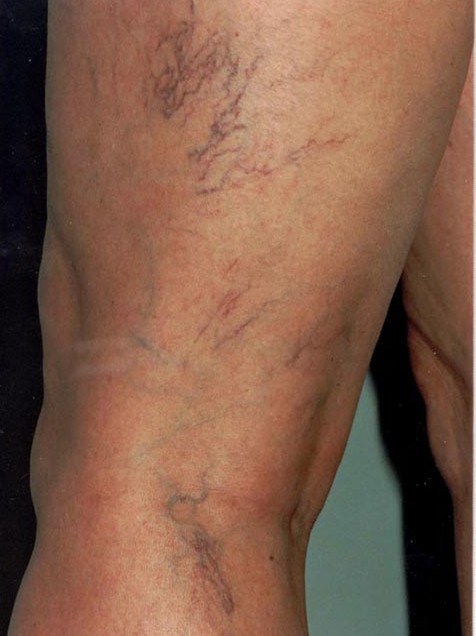The reason is simple – two things. First, in the blood are red blood cells, containing hemoglobin. It carries oxygen and in the process of capturing molecules is oxidized and acquires a bright red color. The hemoglobin containing oxygen, is called oxyhemoglobin. It flows through the arteries, branching into numerous capillaries, where and is given to the cells of the body. This hemoglobin acquires a purplish-blue color, so the veins seem. If we take blood from a vein, it is in contact with air, instantly becomes red again.
Second, the skin absorbs approximately 50% of red wave range, and the rest back then as the waves of the blue band absorbs only 30%. Why veins look blue.
Of particular importance are the veins of the extremities, as the hands and feet requires a good supply of oxygen – in fact they are the most active parts of the body. There are superficial and deep veins. Deep is paired veins that accompany arteries of the fingers, hands, predplechye, feet and shins. They are far away from the surface of the skin, which is called "deep." And surface are the veins, which are located close to the skin, in some areas of the body they can easily be seen.
The veins of the extremities, especially the legs, are extremely vulnerable, because the proportion of the legs have the largest load. The most common disease is varicose veins is the process of looping blood vessels in the body, squeezing them to each other and disrupting the normal circulation of blood. Also cause of varicose veins is a bad operation of the valves of the veins, mainly a hereditary disease. Externally varicose veins is manifested as greatly swollen reddened or blue areas of blood vessels, swelling of the legs, feeling of heaviness in the legs, cramps and pain. Varicose veins greatly increase in size, lose their elasticity and, if left untreated, the skin sores can develop.
